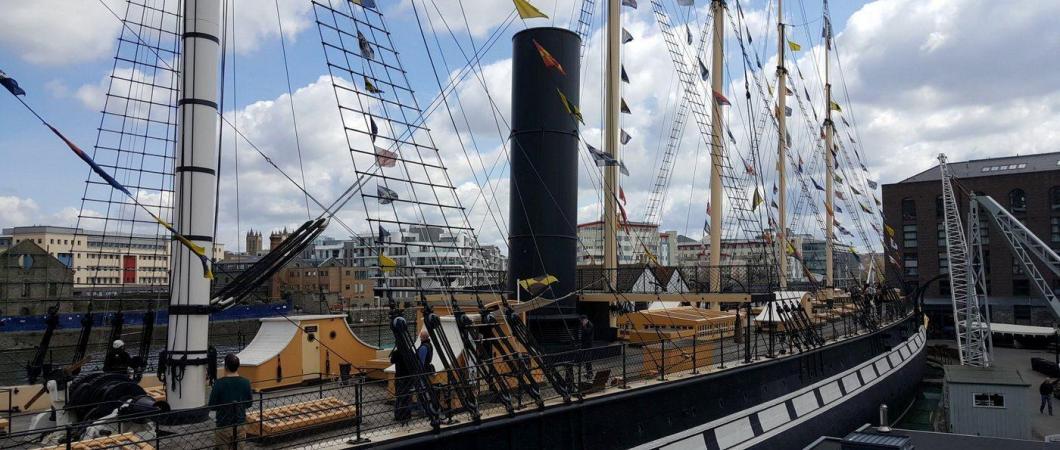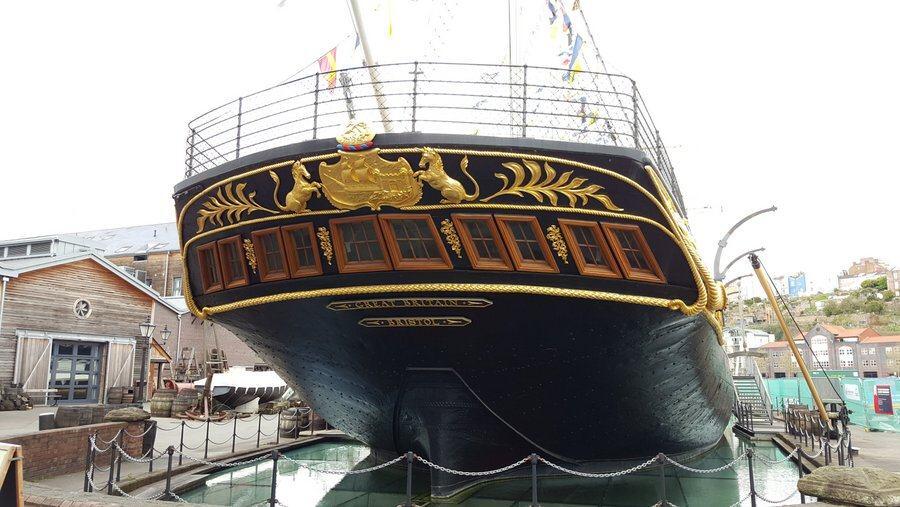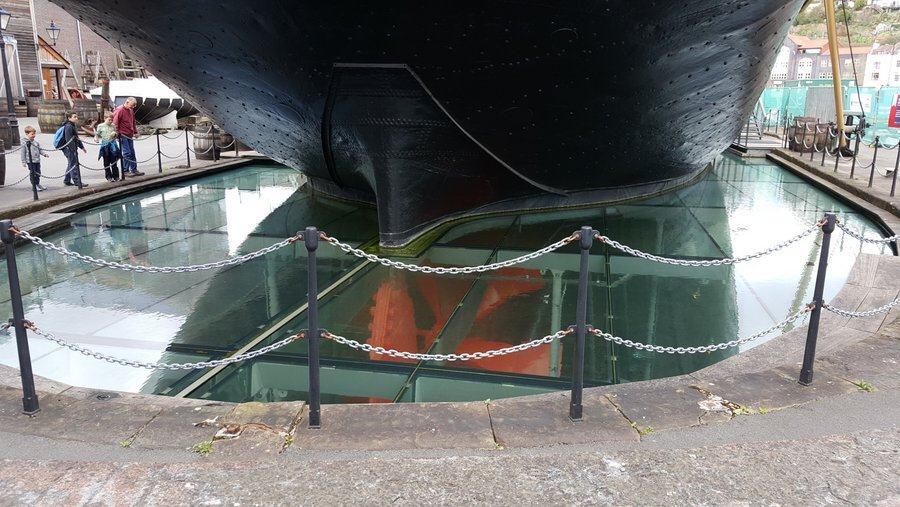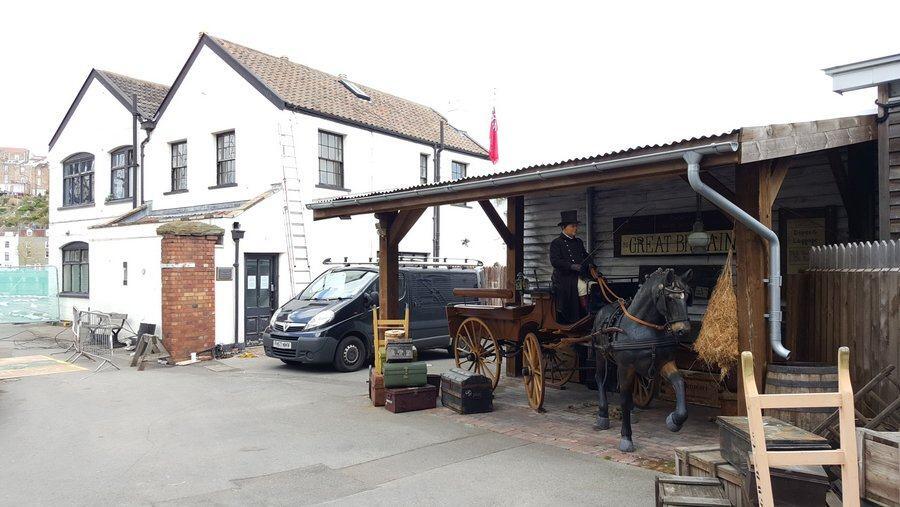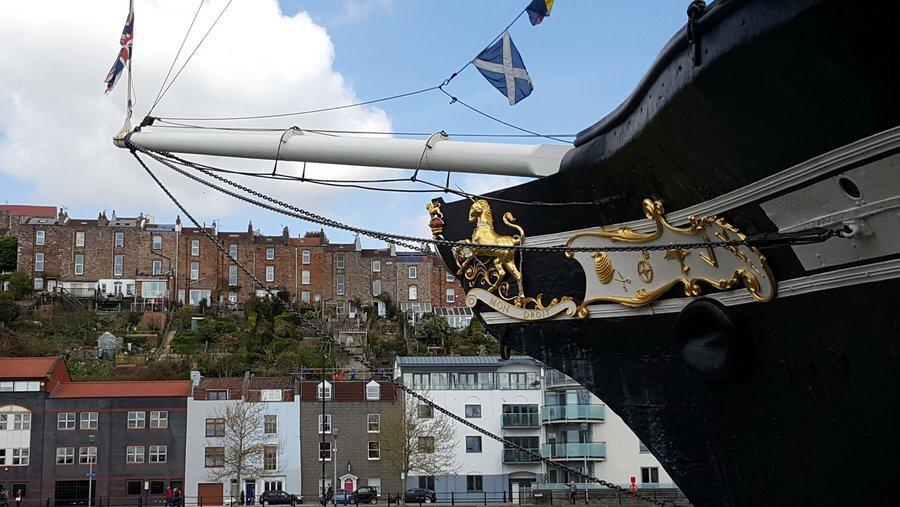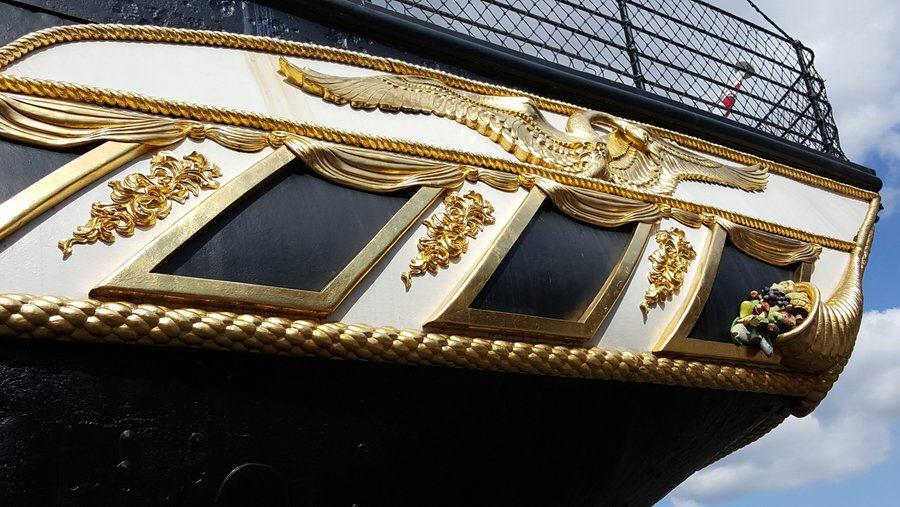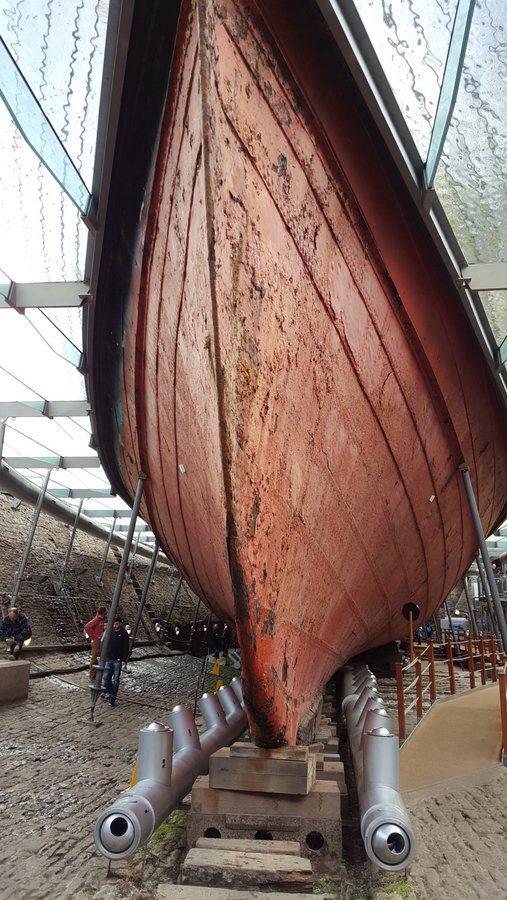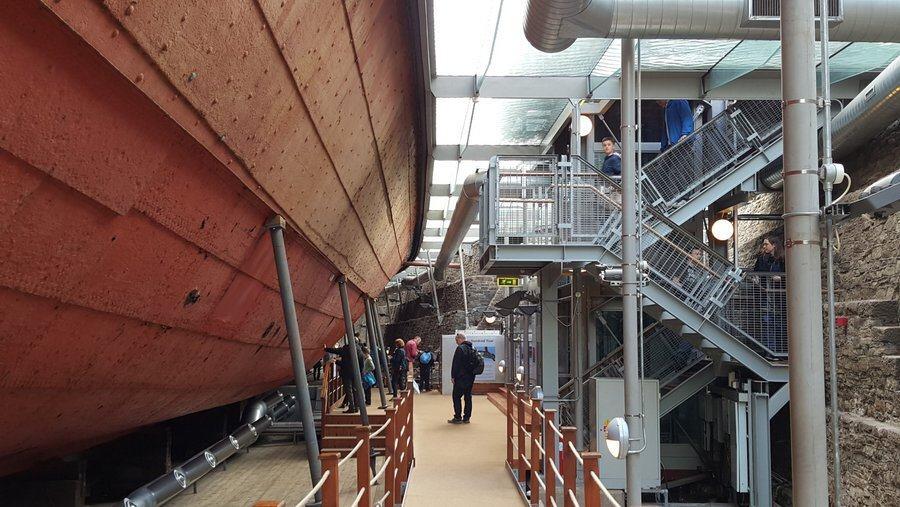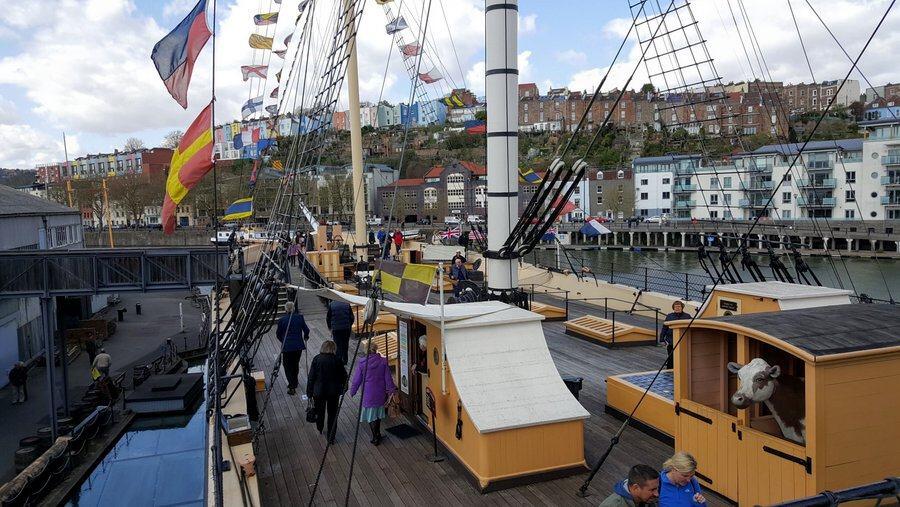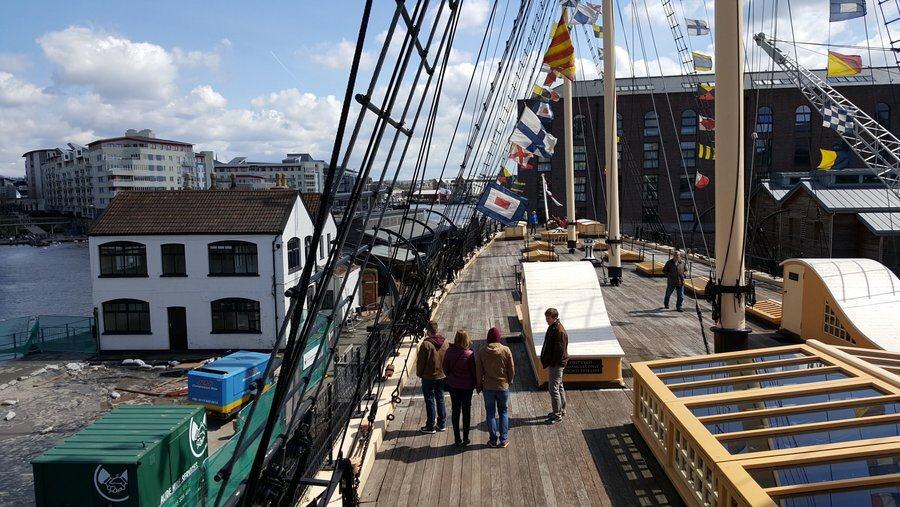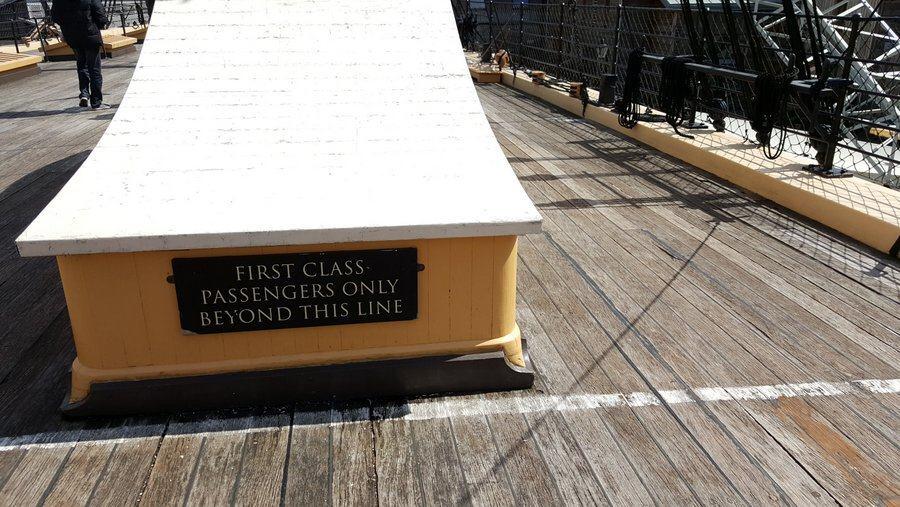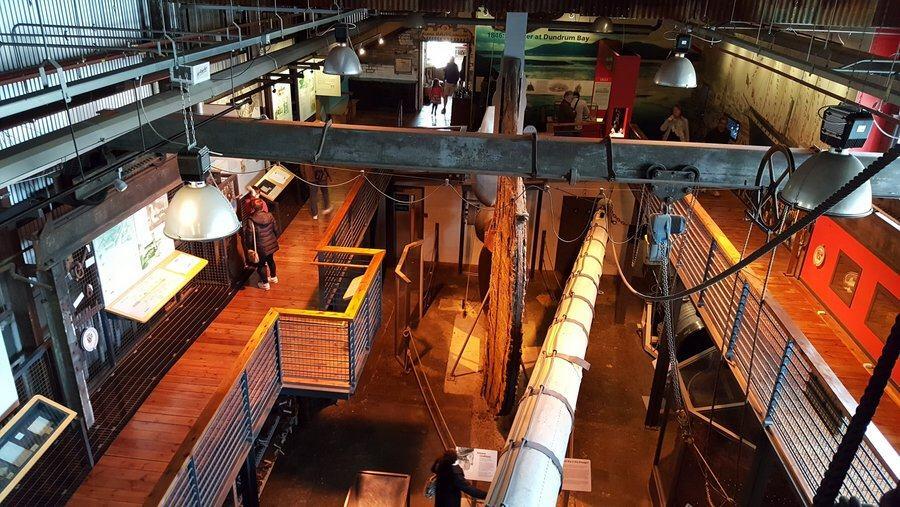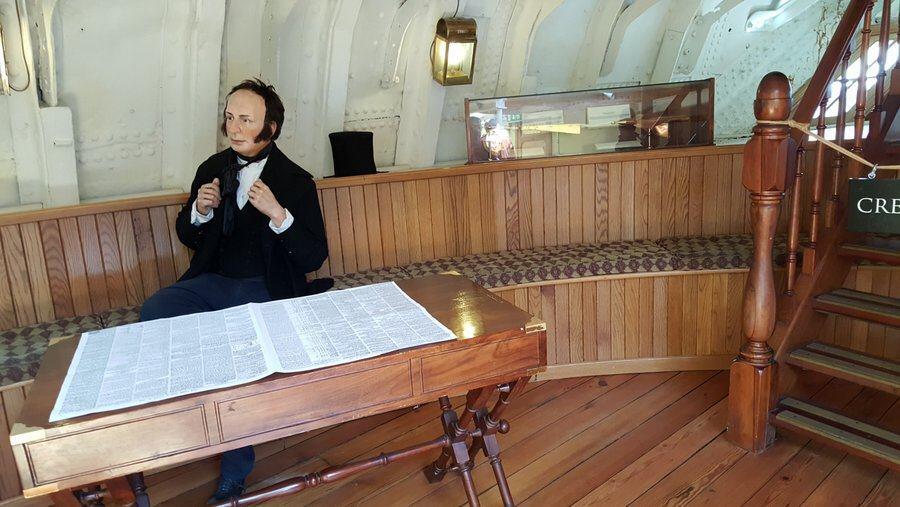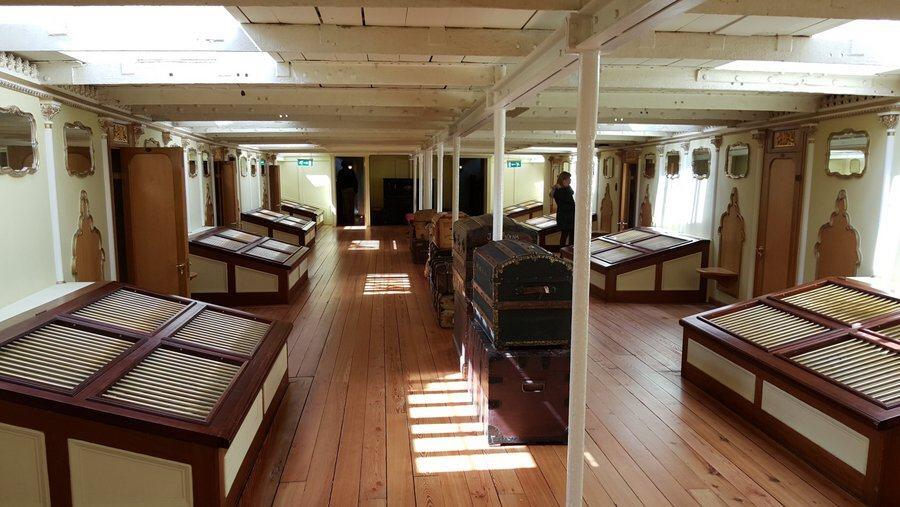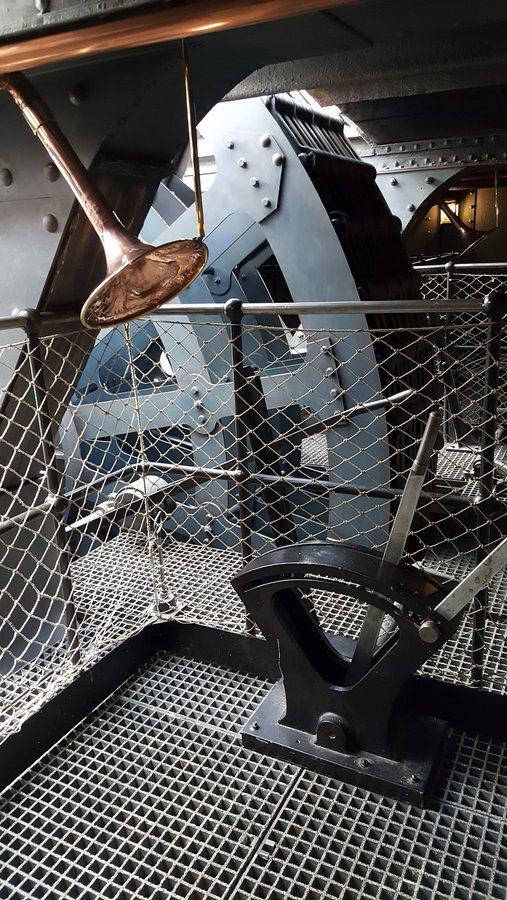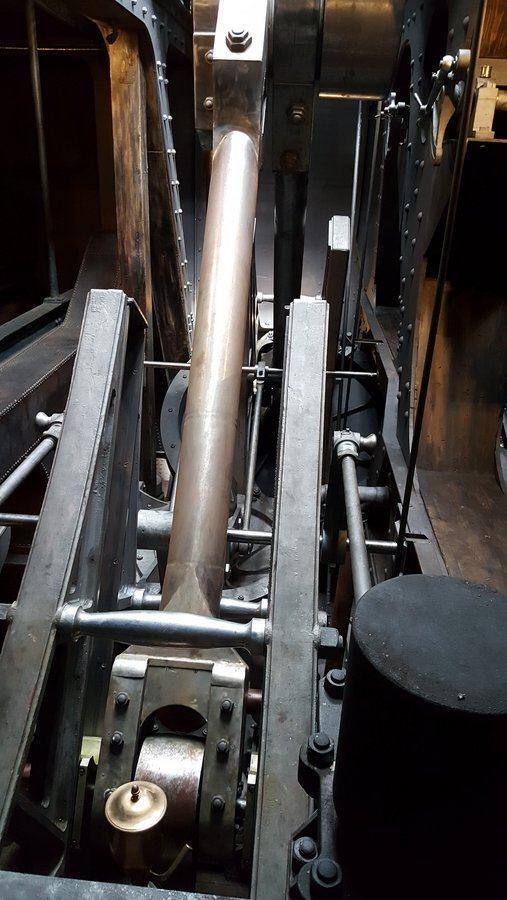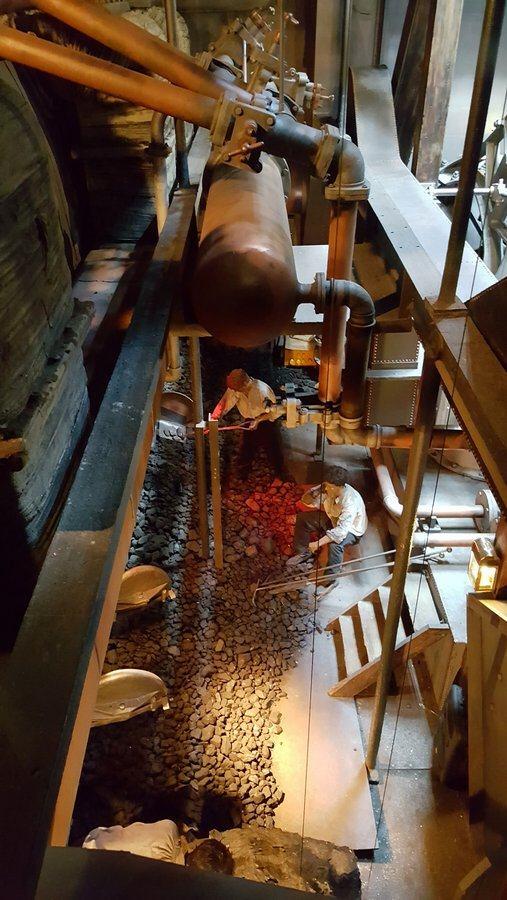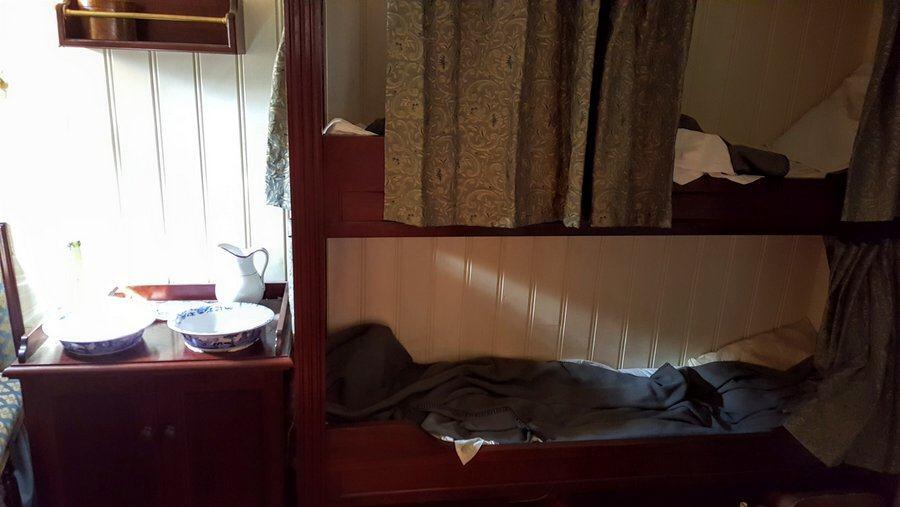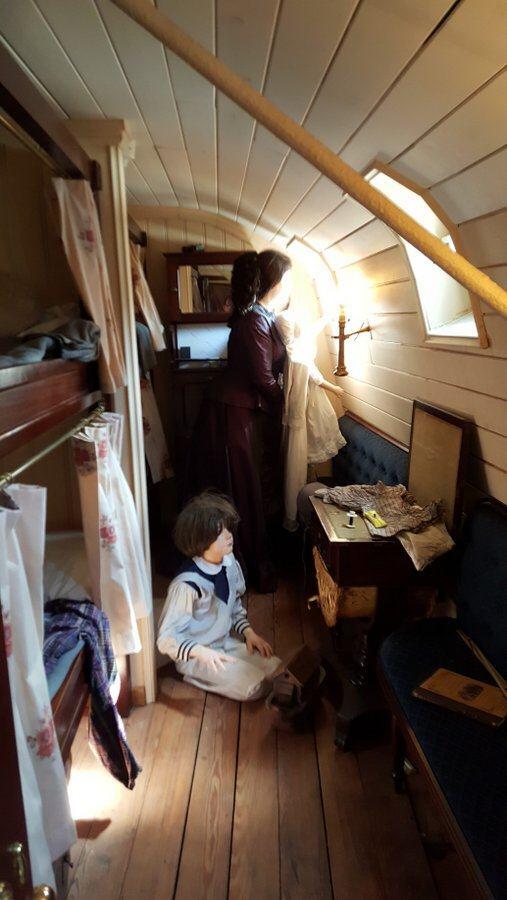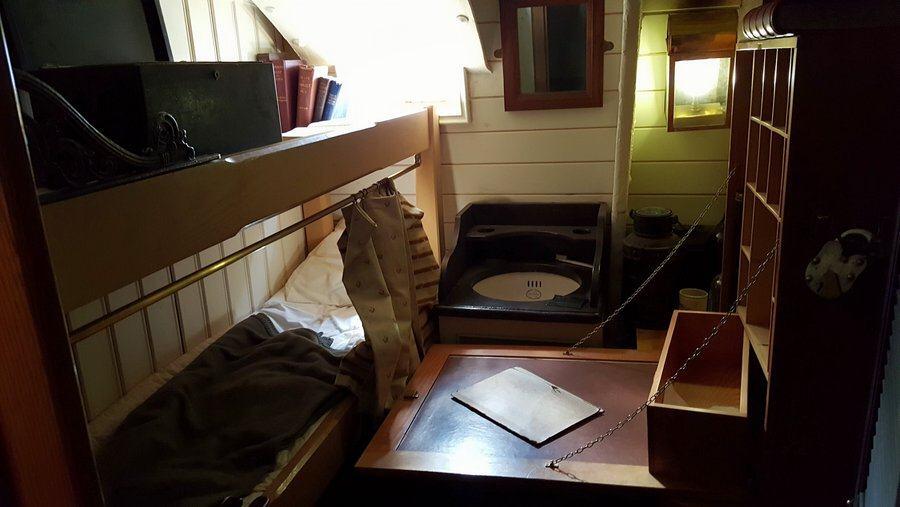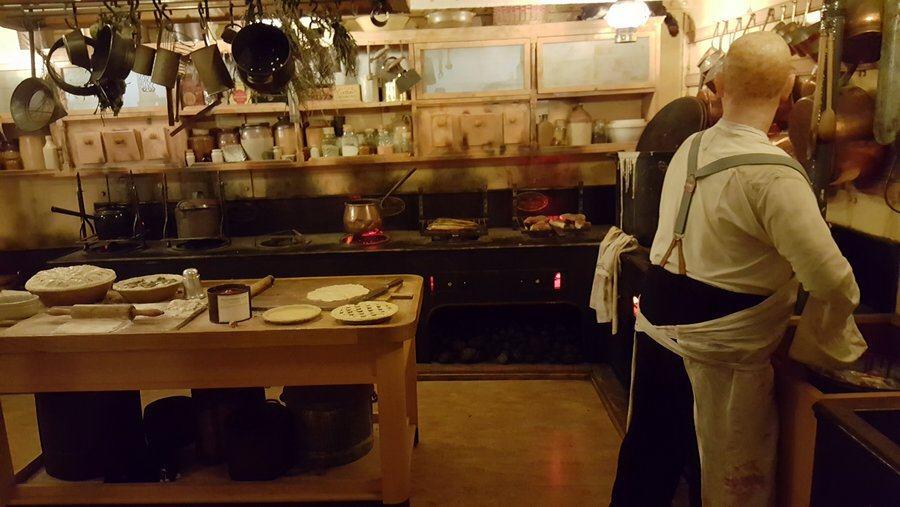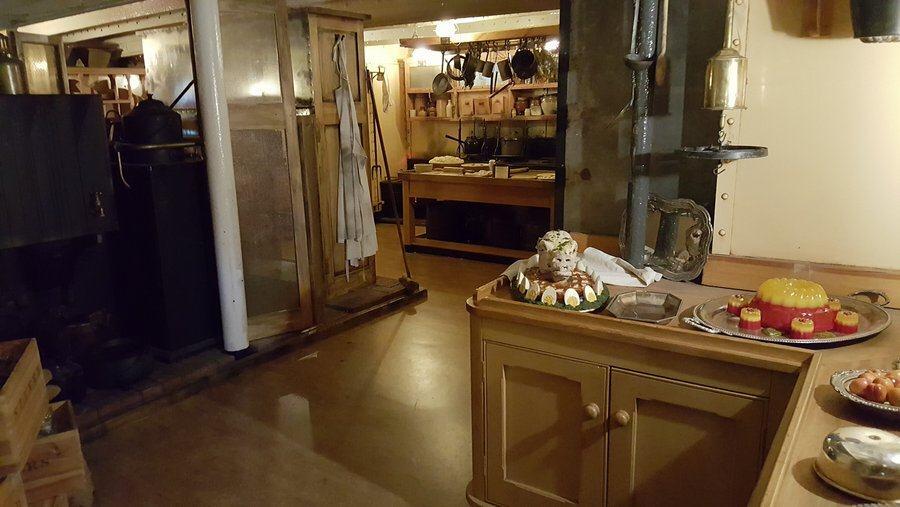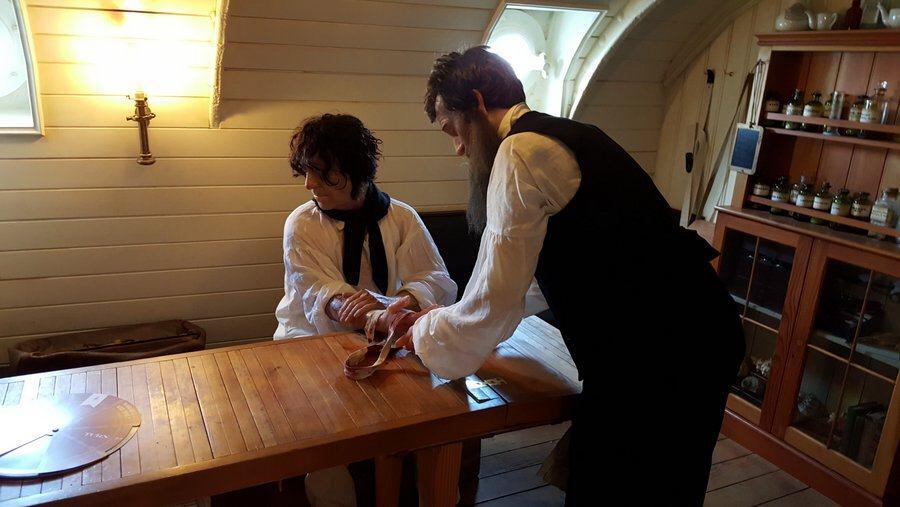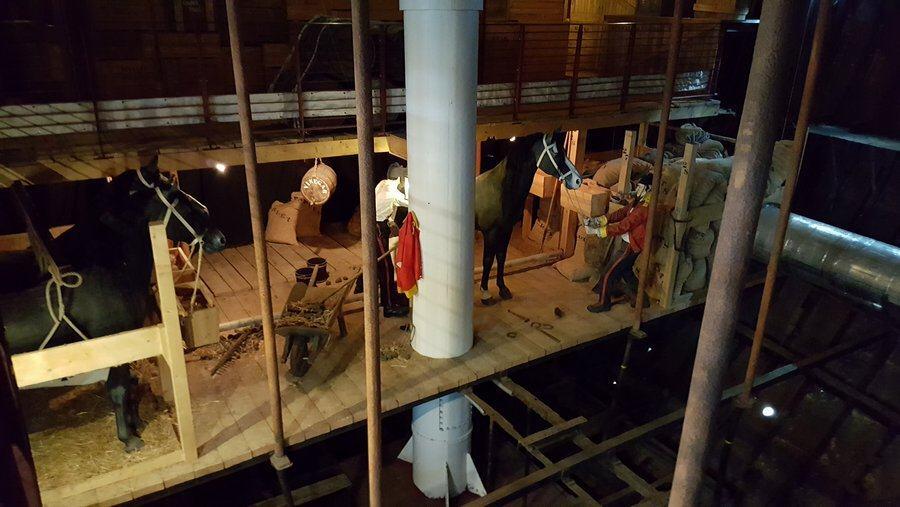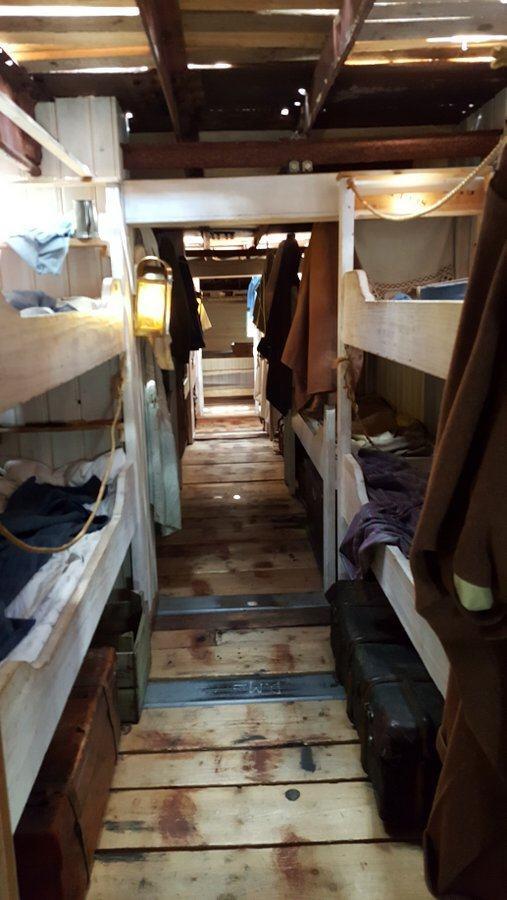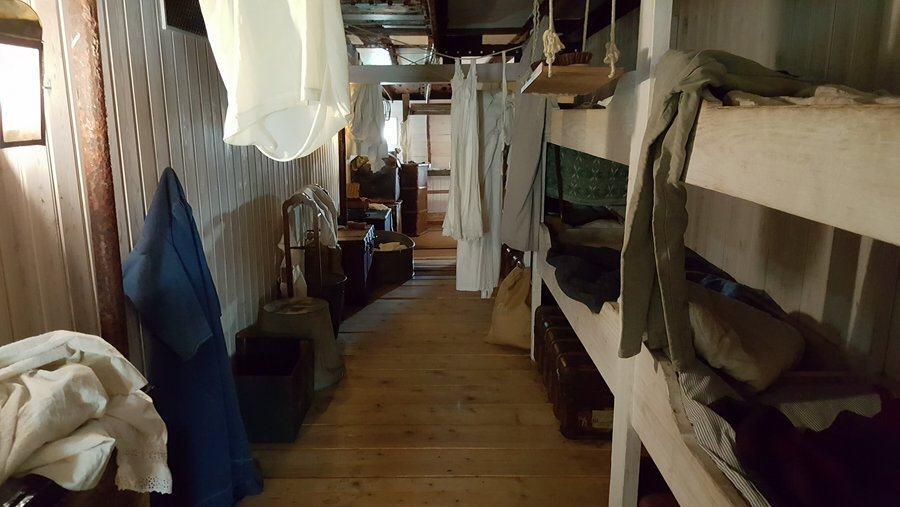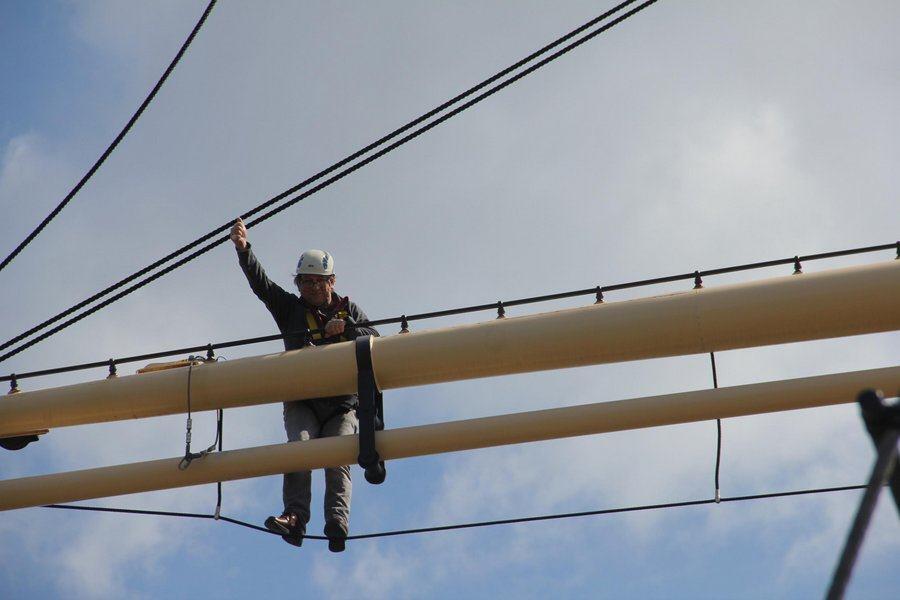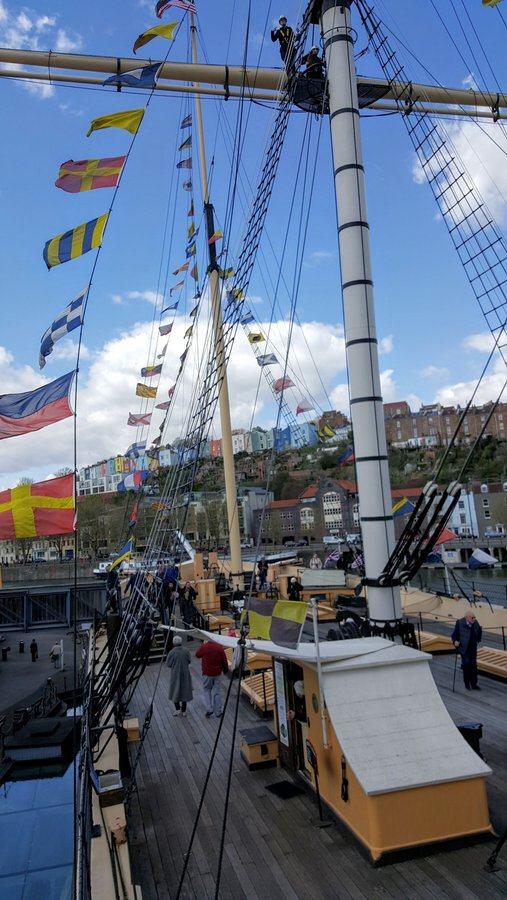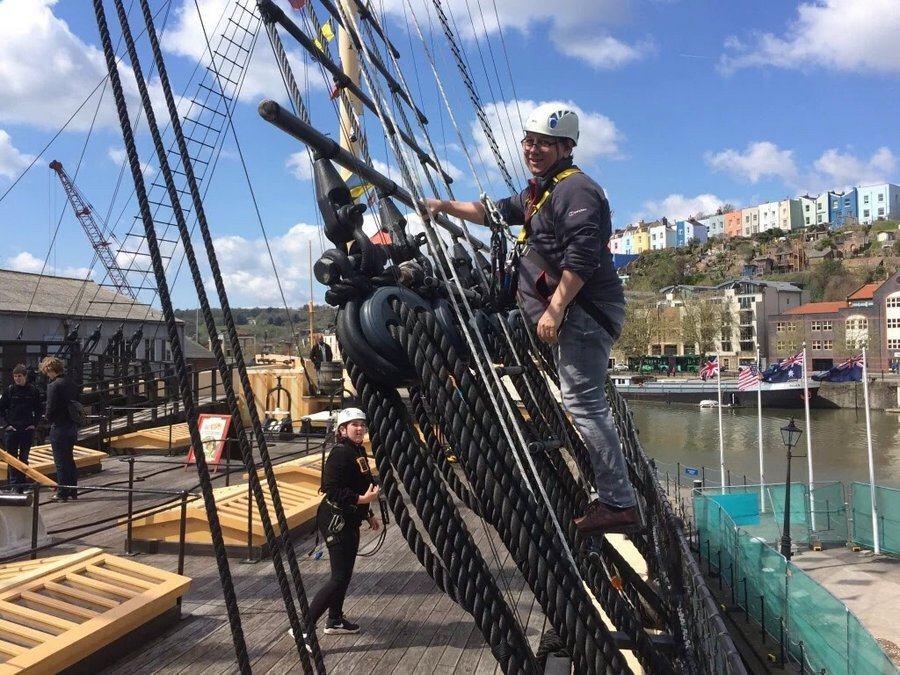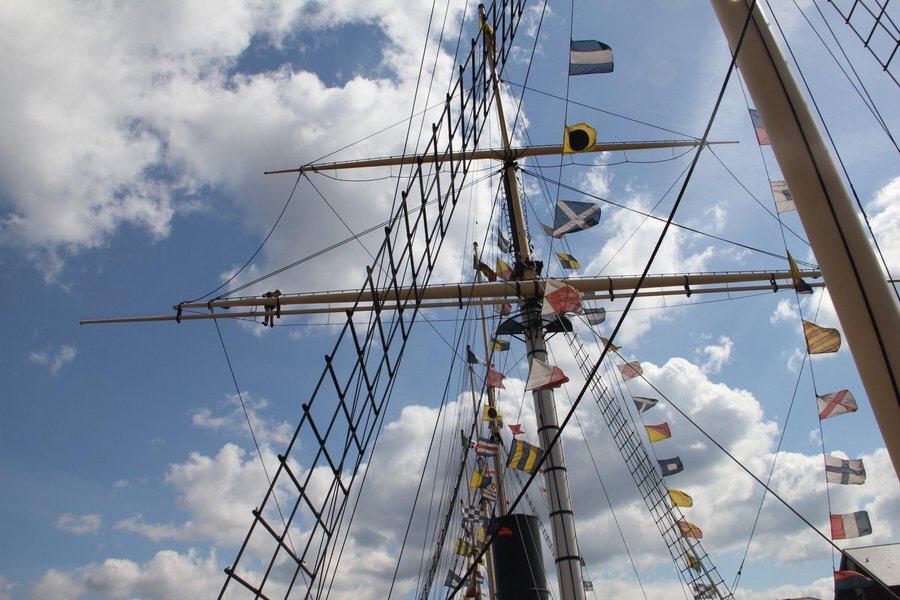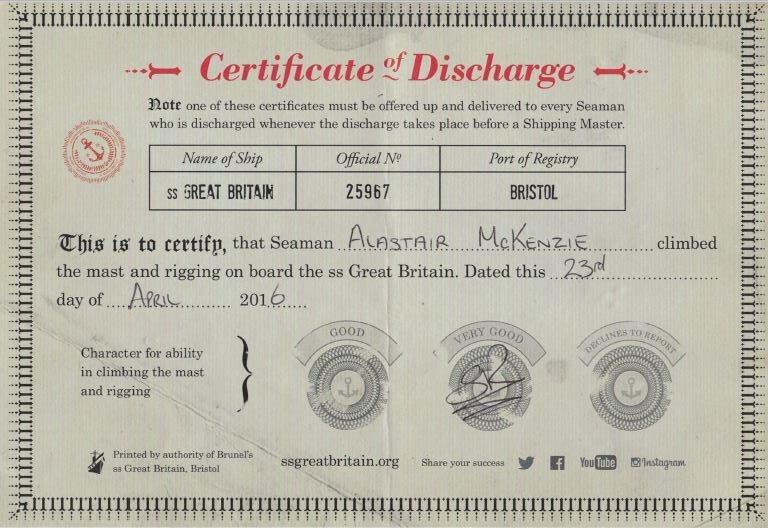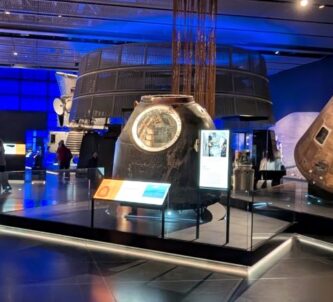I’ve long meant to pay Isambard Kingdom Brunel’s maritime masterpiece a visit, and I wasn’t disappointed.
The Potted History
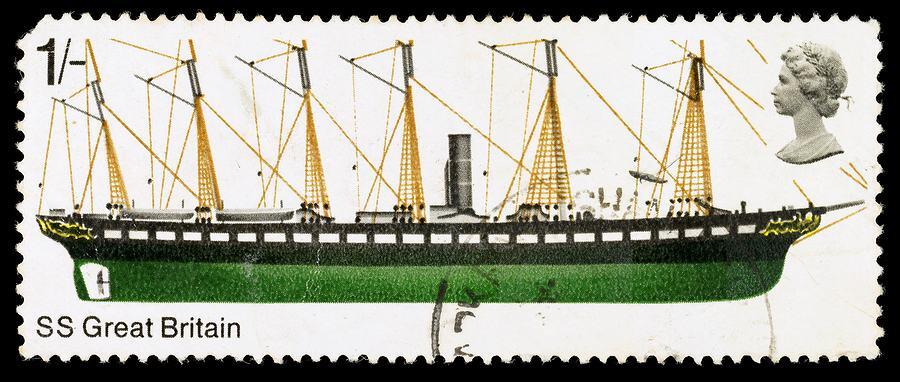
Brunel must have been a commandingly persuasive man because somehow he got the Great Western Steamship Company to approve two serious departures from normal shipbuilding techniques for their new transatlantic passenger ship:
- He changed the planned propulsion system from paddle-wheel to a new fangled propellor… which of course he designed himself, powered by a completely new V-cylinder steam engine… based on one of his father’s designs!
- He proposed building the ship out of iron, not wood. The view of many laymen was that he must be mad; it would simply sink!
Neither of these were industry ‘firsts’, but she was the first to have both, and when she was finally launched in 1843, some 14 years after work started on her, she was also notably the world’s longest passenger ship at 322ft (98 m).
She began her career carrying passengers (252 pax) across the Atlantic, but after running aground in Northern Ireland she was sold to new owners, Gibbs Bright and Co, who re-built the ship for the emigrant route to Australia carrying up to 750 passengers on the 4 month voyage… and a small farmyard of fresh food including, on one manifest in 1864: “one cow, three bullocks, 150 sheep, 30 pigs, 500 chickens, 400 ducks, 100 geese and 50 turkeys.”
Between 1852 – 1881, ss Great Britain made 32 such trips, interrupted only by being requisitioned as a troopship in 1854/5 for the Crimean War, and in 1857 for the Indian Mutiny. With her engine becoming unreliable she was converted to sail only in 1881, and began working as a collier, carrying welsh coal to San Francisco, but was damaged rounding Cape Horn on her third trip and ended up in Port Stanley on the Falkland Islands, where she was sold for use as a coal & wool storage hulk until finally, in 1937, she was towed to the shallow waters of Sparrow Cove and left to rot.
In 1970, Naval architect Ewan Corlett, with financial backing from Sir Jack Hayward, arranged for her to be salvaged and towed back 8,000 miles to the UK, where she arrived back in the very same dock at Bristol from which she had been launched exactly 127 years earlier to the day!
Award-Winning visitor attraction
There is a full-circle poetry in ss Great Britain being located in the very dock where she was built, with the small white house alongside which served as Brunel’s office. The setting is ideal for showing her off, and the ss Great Britain Trust have done an amazing job of preserving her, restoring her interiors, showcasing the lives of those who travelled and worked on board her, and curating thousands of documents, artifacts and personal belongings, for the enjoyment and understanding of between 150,000 – 200,000 visitors a year.
Probably the most impressive thing is the amount of access.
Visitors can get around the ship at dock level, under the ship, on the ship, in the ship, and over it! Bliss! Set aside several hours for your visit. You are going to need it!
Alongside the ss Great Britain
Having the whole dock area, with Brunel’s office, gives the Trust the chance to set the scene with lots of mid-19th century props. So the ss Great Britain, is displayed, dressed overall with flags, as she was at launch and surrounded with crates, horses & carts and dockyard workers. It also means you can see her upper works from all angles, especially the ornate gilded stern & bow areas.
She also looks natural in her setting thanks to the glass floor at waterline level which holds a thin layer of water giving her the appearance of floating in her dock. (It’s not a unique trick. The Cutty Sark in Greenwich, London has something similar, but there’s no water and she is suspended rather un-naturally 3m above the dry dock.) The water, rippling in the breeze, not only makes her look natural in her dock, but also generates an aquarium-like atmosphere…
Under the ss Great Britain
When you get under the waterline and up close to her hull, you begin to appreciate the colossal achievement in rescuing her from the Falklands and restoring her, because she is riddled with holes and rust. Actually the rust is being kept at bay by a controlled dry atmosphere in the sealed dock, maintained by an industrial-scale dehumidifier plant.
It’s astonishing to think that when they brought her back to Bristol in 1978, she had to be floated off the transport barge to make her own way the last few miles up the River Avon, with all those holes plugged up with all sorts of materials, including mattresses, and monitored closely by a team of divers!
Getting under the waterline also means you get to see Brunel’s genius in the design of the amazingly efficient propellor – the largest ever for a ship at that time – and rudder, which was much more efficient than most, as demonstrated in San Francisco Bay where she showed off her tight turning circle.
The ss Great Britain Trust have created an app with Aardman (of Wallace & Grommit fame, whose office & studios are next door) that allows kids to play with the ship design to find the most efficient hull and propulsion. They are just adding a new propellor design element (number of blades, angle, etc) to it. There is a screen down in the dock where kids (& grown-ups! It’s not so easy!) can try it out. The app is called ‘Full Steam Ahead‘ available from App Store (IOS) & Play store (Android)
One of my only two minor criticisms of the ss Great Britain museum is the access to the dock floor. There is a slow lift for those who need it, but the stairs are so ridiculously narrow there is a lot of congestion at moderately busy periods, with people having to wait at the top of each flight for others to come up or down.
On the ss Great Britain
The route onto the ship is up through the adjacent museum building which houses many large components from the ship (like parts of the original rudder), artifacts, and documents (tickets, posters, journals, etc), laid out in. There’s lots of interactive stuff for kids and adults, and a section devoted to the rescue of the derelict ship from the Falklands.
When you step on board you can pick up (from the audio hut) an audio guide that will explain all the numbered locations on the ship, depending on your interests; From the perspective of the 1st class or steerage passengers, from the perspective of the ship’s cat for kids, or an slightly more detailed engineering perspective.
The ship is brought alive with sounds and smells, and manikins all based on documented information and stories from journals, so it feels very authentic. The sound of a cow bellowing on the upper deck, reminds you, that fresh meat had to be alive!
In the ss Great Britain
The restoration work on board is amazing. From the 1st class passengers’ cabins, saloon and dining hall to the officers quarters (when she was used as a troopship) and their horses quartered in the forward hold. From the storerooms, bakery and galley to the boilers and huge engine room with its replica thousand horsepower steam engine pistons moving slowly (and silently, powered by electricity).
For me the three standout things were, the tiny size of the cabins and bunks – it’s easy to forget how much our average height has grown in the last couple of centuries; the lavish style & decoration of the first class public spaces; and the elegant simplicity of Brunel’s mighty engine.
Above the ss Great Britain
For those who don’t fear heights, there’s a chance to climb the ratlines to the first yard on her foremast and step out along the footropes to the yardarm.
I’ve climbed a few yacht masts in my time, but never been out on the yard of a square-rigged ship, so here was my chance.
After a bit of form-filling (a comprehensive health declaration and disclaimer), the Go Aloft team kit you out in a harness and helmet, ensure you have nothing on your person that could be dropped (rings, watches, mobile phone, keys… nothing), and train you on how to use the twin safety-line clips (cleverly designed so that one can’t be un-clipped unless the other is clipped).
Then you are guided over the pin rail to start climbing up to the first yard where other team member supervises your transition onto the yard itself… gulp. I think I’ve got less comfortable with heights as I’ve grown older!
And here’s the thing. How on earth did they do this in the 18/19th century, when they were cold, wet & tired, when their hands were cold wet & tired, in a heavy sea with the wind howling and the ship swaying and shuddering, in the dark, with no clever safety harness???
Until you try it, you have no understanding of what sail hands had to do, and that alone is worth the price of admission! (Actually Go Aloft is extra. See factbox below.)
Back down on dry land
The Brunel Institute is also on site and contains a comprehensive library of 6,500 maritime history books and the Institute’s archives (140,000 documents most of which are ship plans and sketches). Access is free but you do need some ID eg. up-to-date driving licence or utility bill. See opening times below.
Before leaving, there is the ubiquitous ‘visitor centre’, aka gift shop. This is my second point of minor criticism. There were some interesting items in here that I was thinking of buying, but although the site didn’t seem particularly busy there was nobody able to advise or sell anything. All the staff were tied up selling tickets to arriving visitors.
 Minor Declaration of interest: In 2006, the year after SS Great Britain opened, it was awarded Highly Commended for ‘Best UK Tourism Project’ in the annual British Guild of Travel Writers tourism awards. Quite right too! But as the current Chair of the BGTW I probably shouldn’t say that!
Minor Declaration of interest: In 2006, the year after SS Great Britain opened, it was awarded Highly Commended for ‘Best UK Tourism Project’ in the annual British Guild of Travel Writers tourism awards. Quite right too! But as the current Chair of the BGTW I probably shouldn’t say that!
Factbox
Events
There are a few free events worth looking out for:
- If you have children with you, on the first Tuesday of every month the resident storyteller, Sarah Mooney, tells tales of the sea.
- There are ‘Crew Talks’ every Saturday and alternate Tues & Thurs at 2pm when ‘crew’ members give talks on the life of passengers and crew on board.
- Museum curators present rare artefacts at 12.30pm on Tues – Thurs, and the first two Saturdays of every month.
- On Fridays at 12.30pm, curators talk about the conservation of the ship and the collections in the Brunel institute.
Getting there:
Great Western Dockyard, Gas Ferry Road, Bristol, BS1 6TY.
You can get there by foot from the city centre, or by bus (Wessex Connect 506 runs from Temple Mead station), or by bus & ferry (First buses 357, 358, 359 to the Hotwell Road stop and use the Cross-Harbour Ferry).
Price:
Adults £14
Children Free (Under 4)
15-17 yr old £8
Students £11, Seniors £13 (60+)
Two parent family + 2/3 children £37
One parent family + 2/3 children £23
Grandparents family (2 adukts + 2/3 children) £34
Single grandparent family £22.
Opening Hours:
Monday to Sunday, 1000 to 1730* (last entry 1630)
Closed on 24 & 25 Dec, and second Mon in Jan.
The Brunel Institute has separate opening times.
| Mondays | Closed |
| Tuesdays | Open 10:30am to 4:30pm (closed 27 Dec) |
| Wednesdays | Open 10:30am to 4:30pm (closed 28 Dec) |
| Thursdays | Open 10:30am to 5:30pm* (closed 29 Dec) |
| Fridays | Open 10:30am to 4:30pm (closed 30 Dec) |
| Saturdays | Open the first two Saturdays of each month, 10:30am to 4:30pm |
| Sundays | Closed |
* Spring/Summer times.
**Last entry 4:30pm during winter opening times
Go Aloft:
The price is £10. You can buy tickets on the day and on the weather deck, so you can make up your mind at the last minute when you see it! There are restrictions: Minimum Age 10 or Minimum Height 1.4m/4′ 5″ or Maximum Weight 18 stone/ 114 kg.

